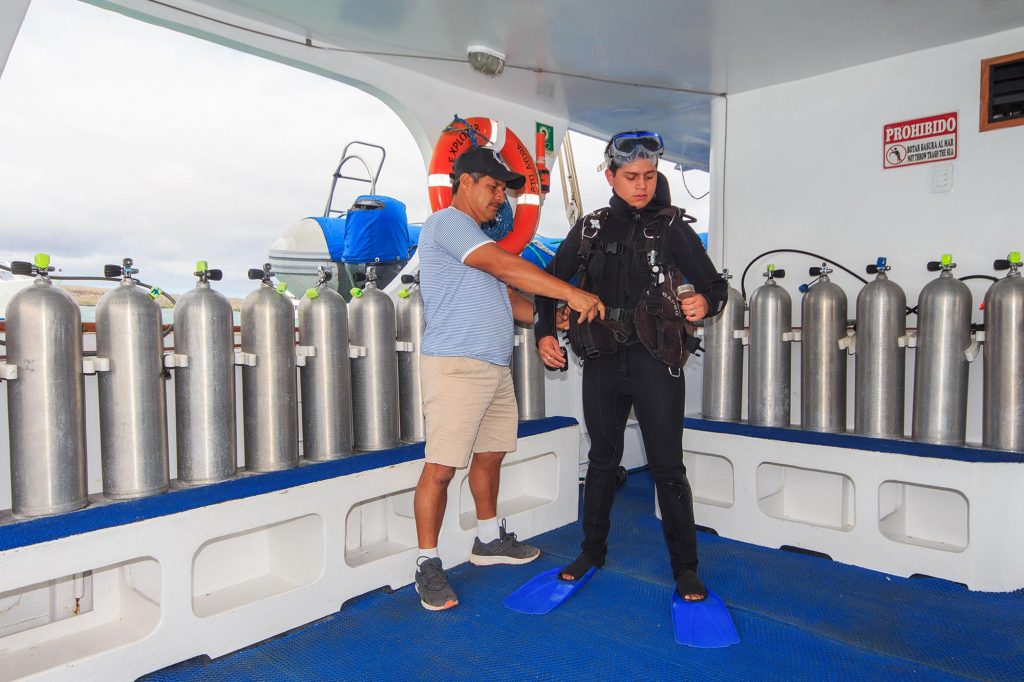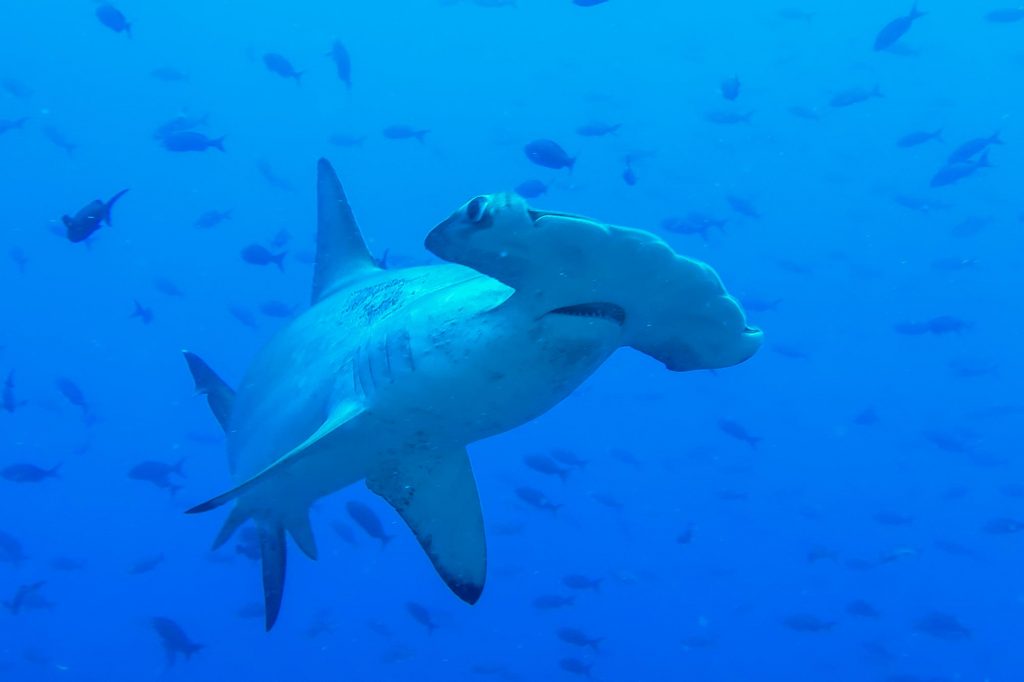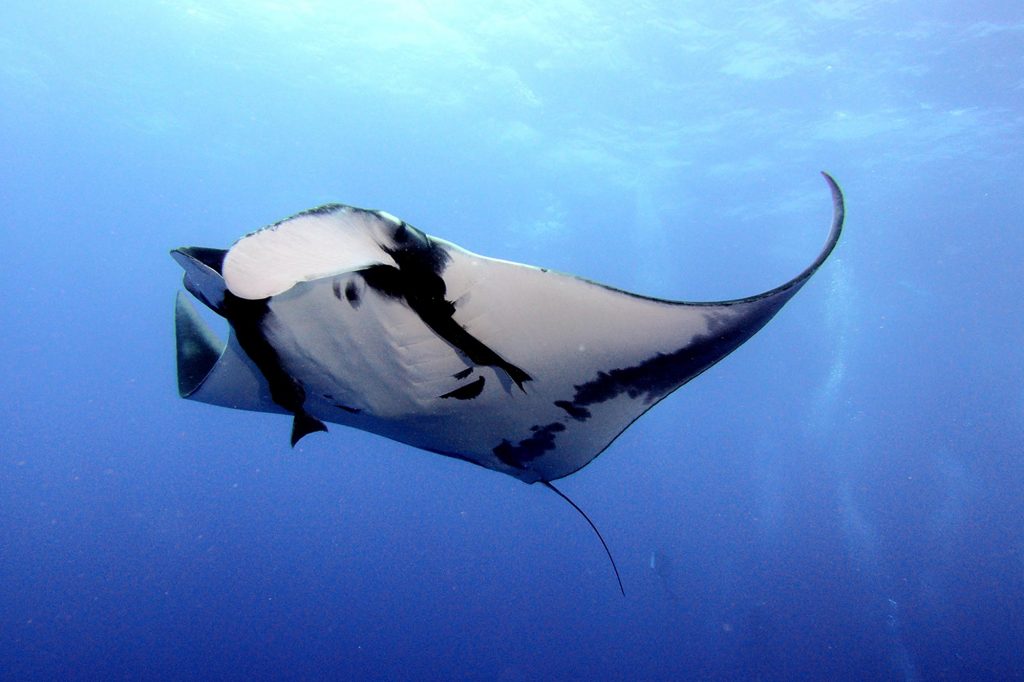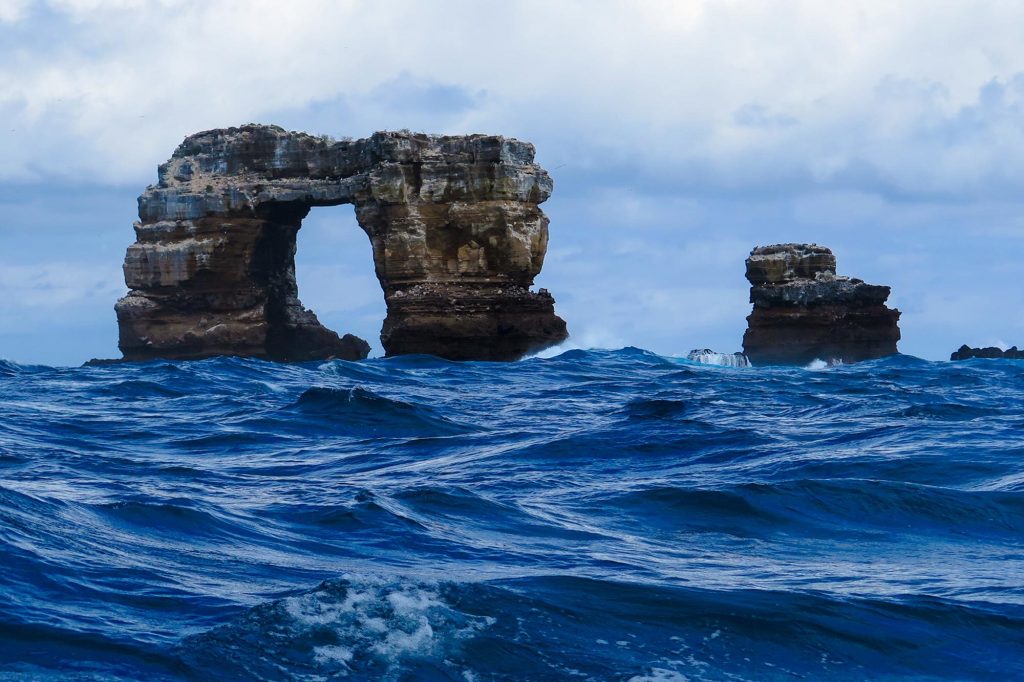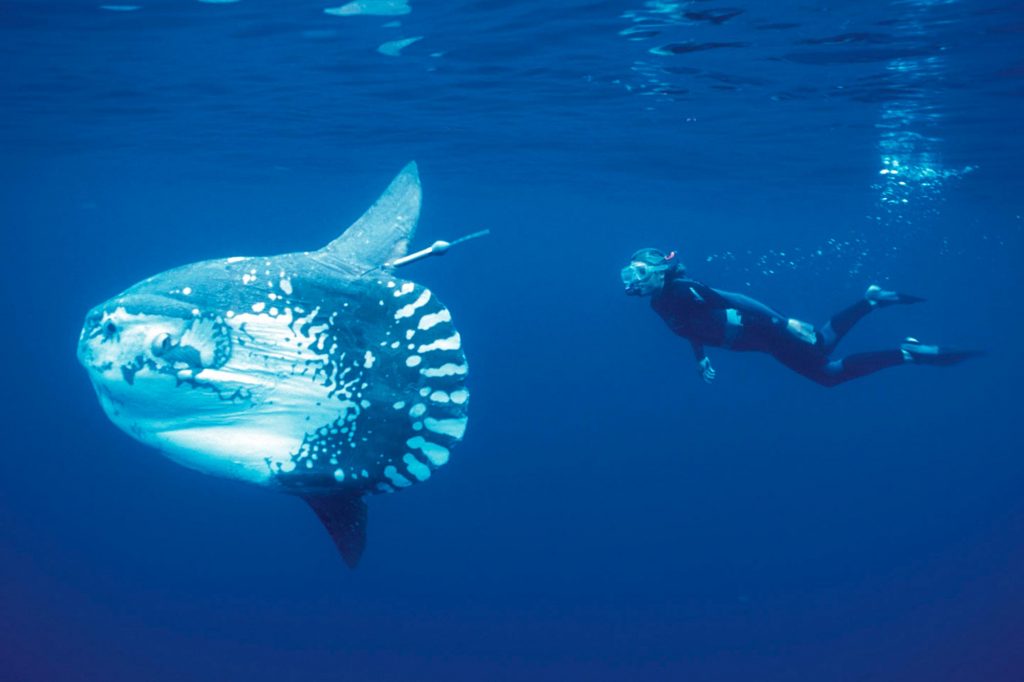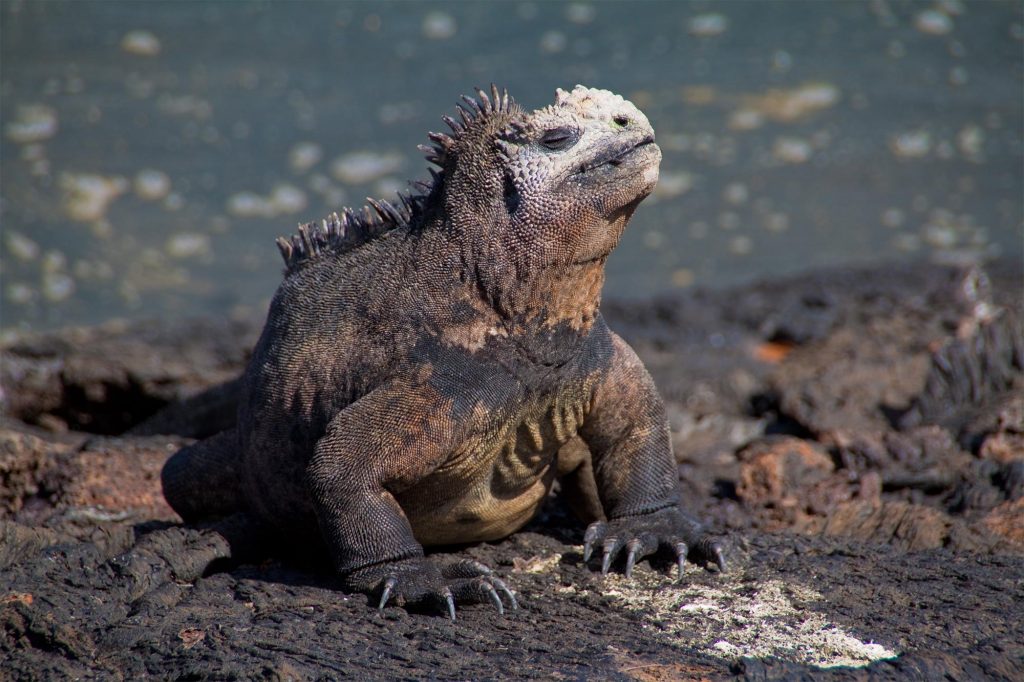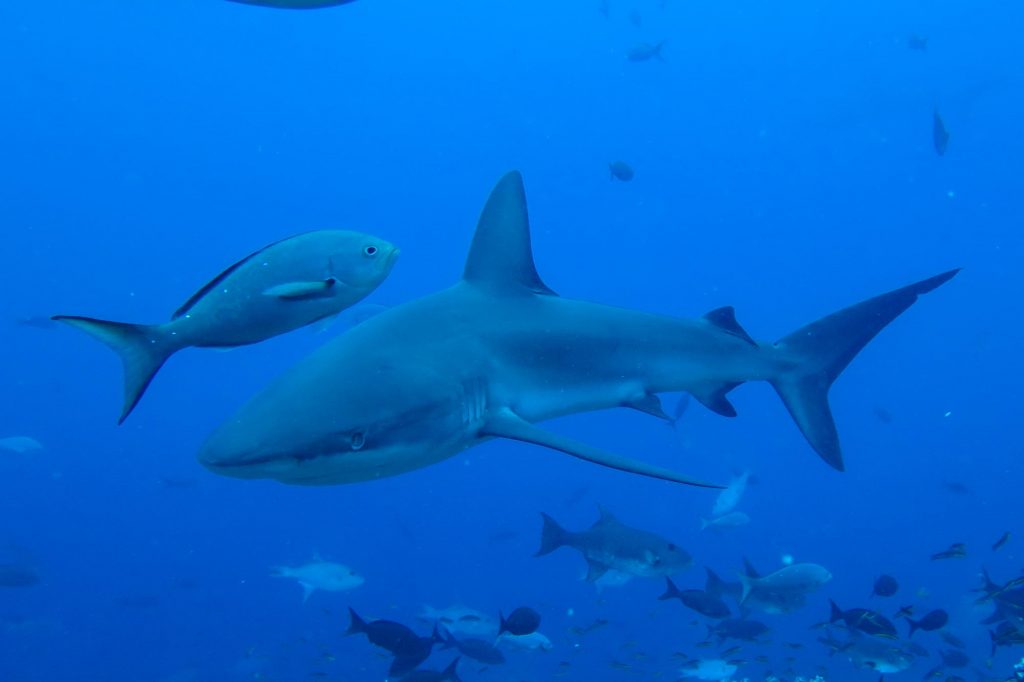One of the most challenging aspects of diving in the Galapagos is dealing with currents that can be too strong to swim against (2 to 4 knots at times). Overall, expect that currents will be moderate to strong. At most dive sites, the strength of currents is constantly changing, sometimes in the middle of the dive.
When deciding if your skills are sufficient and your physical condition adequate for the Galapagos, keep in mind that the diving is varied and demanding. In general, Galapagos diving is mainly for advanced divers because of the extreme conditions – cold water, strong currents, and limited visibility. Nevertheless, there are very good sites for intermediate divers. However, We strongly recommend that divers visiting the Galapagos have more than 50 logged dives. It is also preferable that divers have had some experience with rough surface conditions, low visibility, and strong currents; and that they have had some exposure to diving in cold water, requiring thicker wetsuits and hoods.


